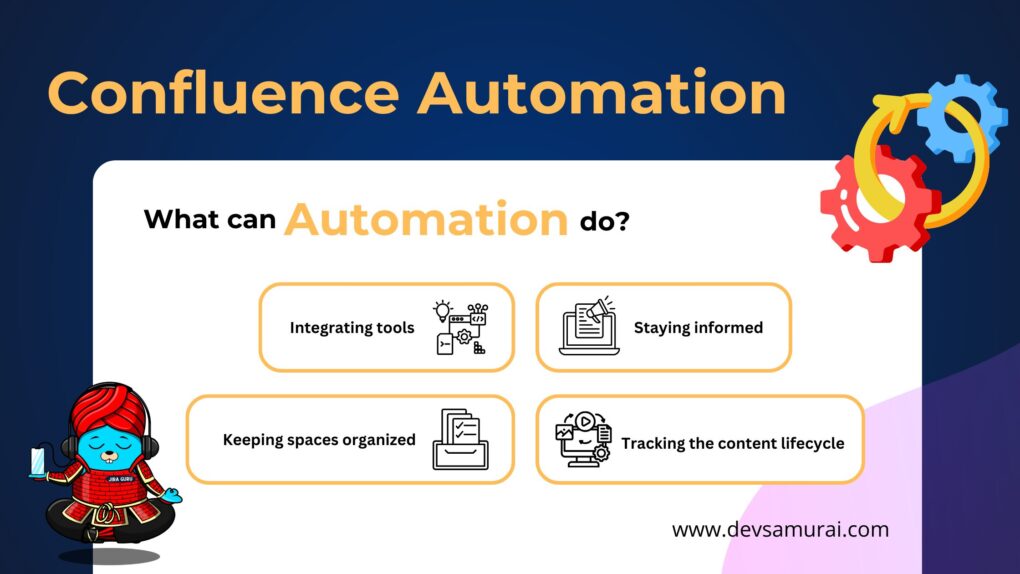Efficient knowledge management is key to great customer service and smooth operations. Jira Service Management (JSM) helps create and manage a knowledge base, boosting support team productivity and customer satisfaction.
A well-organized knowledge base lets users find answers and solve issues on their own, reducing the support workload and speeding up resolutions. Keeping it updated and accessible ensures efficiency.
In this blog, we’ll share best practices and tips for managing your JSM knowledge base, covering content structure, user feedback, and optimization. Let’s get started!
Understanding Knowledge Base Management in JSM
Knowledge management involves creating, organizing, sharing, using, and managing knowledge within an organization. A knowledge base is a crucial part of this process. It is an online library of information about a product, service, or topic, including FAQs and troubleshooting guides.
Jira Service Management (JSM) provides an out-of-the-box knowledge base that helps service teams manage and share knowledge effortlessly. This tool integrates with Confluence, allowing your team to create and curate articles directly within your JSM project.
Here’s how a knowledge base in JSM can benefit your teams and customers:
- Save Time for Agents: Document answers to frequently asked questions to reduce repetitive queries.
- Empower Customers: Enable customers to find resolutions on their own by searching the help center.
- Gather Feedback: Collect customer feedback to improve and update articles.
- Speed Up Resolutions: Help agents solve requests faster by sharing relevant articles with customers or referencing them during their work.
- Encourage Contribution: Motivate agents to create new articles when new solutions are needed.
- Standardize Responses: Provide consistent answers to customer questions instead of multiple, varying responses from different sources.
By effectively managing your knowledge base in JSM, you ensure that accurate information is always accessible, enhancing both customer satisfaction and internal efficiency.
The knowledge management process:
Knowledge management is an ongoing responsibility that involves a continuous cycle of adding new information, updating existing content, and removing outdated materials. Here’s a detailed look at the process and how to manage it effectively:
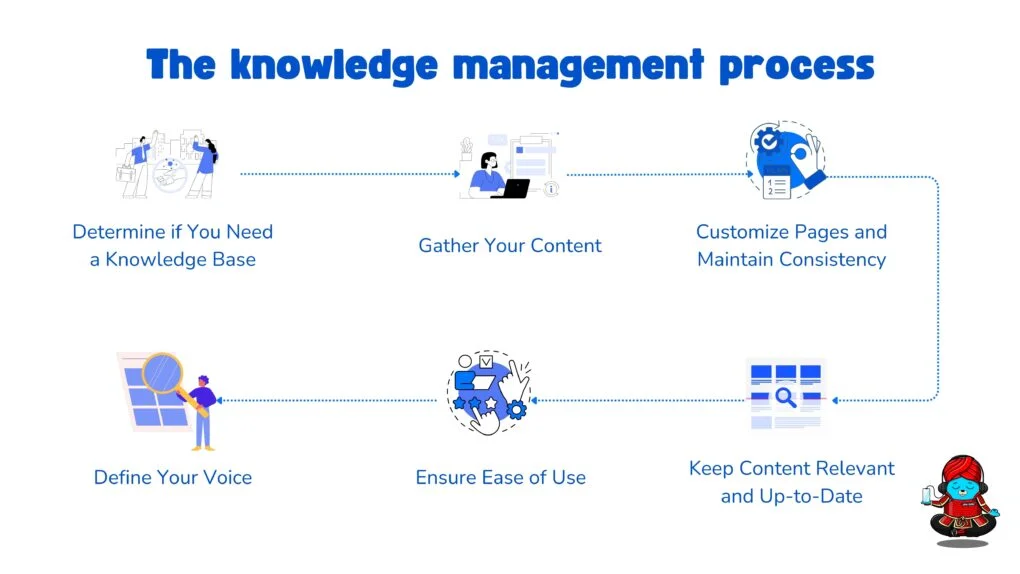
1. Determine if You Need a Knowledge Base
Start by assessing the potential benefits:
- Time Savings: Consider how much time your team would save if they didn’t have to answer repetitive questions.
- Improved Goals: Look at your customer satisfaction and productivity goals. If there’s room for improvement, a knowledge base can help.
2. Gather Your Content
Collecting content is a crucial step:
- Comprehensive Collection: Gather FAQs, troubleshooting guides, and other helpful information from all service-providing departments, including IT, HR, and customer support.
- Team Involvement: Ensure all departments contribute to the knowledge base and participate in its ongoing maintenance.
3. Customize Pages and Maintain Consistency
Consistency in presentation enhances the user experience:
- Style Guide: Create a style guide covering fonts, type sizes, colors, and images to ensure uniformity.
- Consistent Presentation: Make sure all content adheres to the style guide for a cohesive look.
4. Define Your Voice
The tone of your knowledge base should reflect your organization’s brand:
- Brand Voice: Determine whether your tone is formal or casual and ensure it aligns with your overall brand.
- Marketing Collaboration: Work with your marketing team to maintain a consistent voice.
5. Ensure Ease of Use
Your knowledge base should be user-friendly:
- Clear Labels and Search Terms: Use intuitive labels and search terms to make information easy to find.
- Logical Organization: Structure the content logically and maintain this organization consistently.
6. Keep Content Relevant and Up-to-Date
Regular updates are essential for maintaining a useful knowledge base:
- Use Analytics: Implement analytics to track how users interact with your content and identify areas for improvement.
- Feedback Mechanism: Allow users to leave feedback and ratings on articles to keep content relevant.
- Stakeholder Involvement: Ensure management and marketing teams are involved in the content approval process.
- Empower Gatekeepers: Assign multiple gatekeepers to approve content quickly and avoid bottlenecks.
How to set up your knowledge base in Jira Service Management
Setting up a knowledge base in Jira Service Management (JSM) involves a few key steps. Whether you’re starting from scratch or integrating an existing Confluence setup, here’s how to do it:
If You Don’t Already Have Confluence:
To set up your knowledge base, you need at least the Free plan of Confluence on your site.
Add Confluence to Your Site:
- Go to your service project in JSM.
- Select Knowledge base from the project sidebar navigation.
- Follow the prompts to add Confluence. This integration ensures that the necessary features for knowledge management are available directly in JSM.
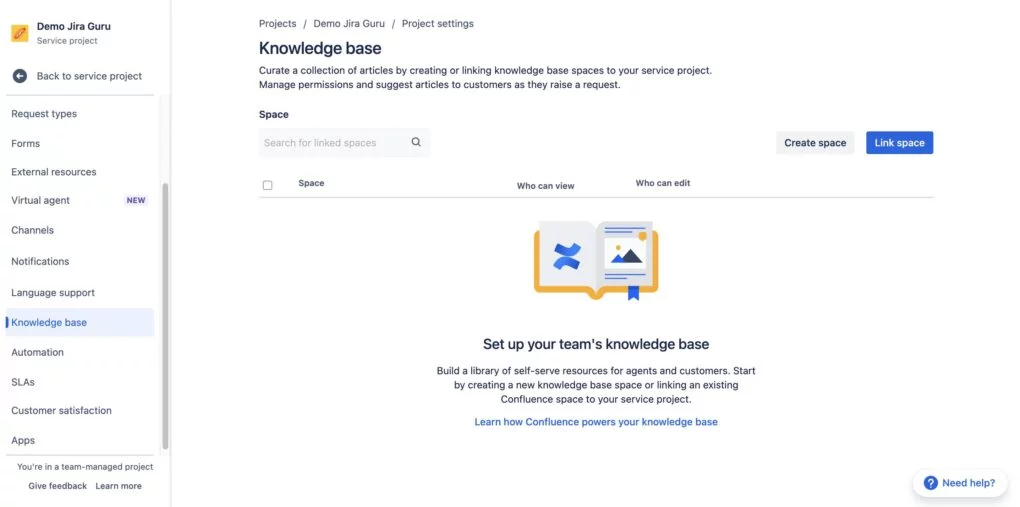
If You Already Have Confluence:
To link existing Confluence spaces to your service project and make all drafts and published pages available:
Link Knowledge Base Spaces:
- Navigate to your service project settings.
- Link the Confluence spaces you want to use with your service project.
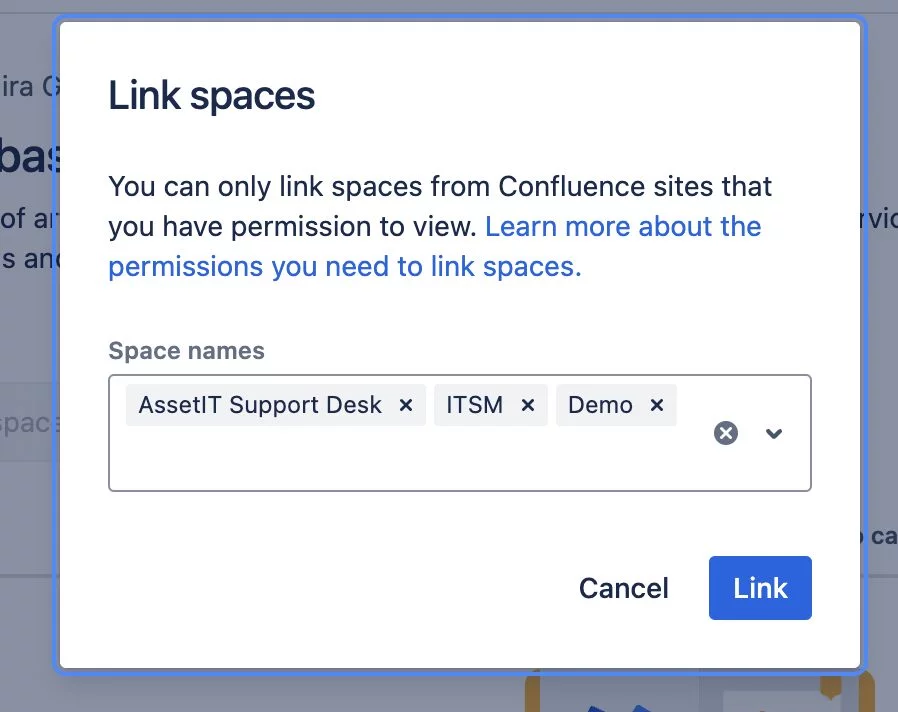
How to Create a Knowledge Base Article
Next, add articles to your knowledge base to help customers find solutions on their own.
From Knowledge Base Project Settings. Create an Article:
- Go to your service project.
- Select Knowledge base in the sidebar menu.
- Click Create article.
- Choose a linked knowledge base space for your article.
- Create and publish your article.
If you start the article creation process and don’t publish, it will be saved in your drafts.
From a Request. Create an Article from a Request:
- In the request view, go to the Details section.
- Under Knowledge base, select related article(s).
- Click Create article and fill in the required information.
How to Review Your Knowledge Base Reports
Once your knowledge base is set up, use JSM’s reporting features to track performance.
Key Knowledge Base Reports:
Requests Deflected:
- Shows how often customers found your articles helpful, including the number of requests deflected and article views.
- A request is considered deflected if a customer finds and uses an article from the portal.
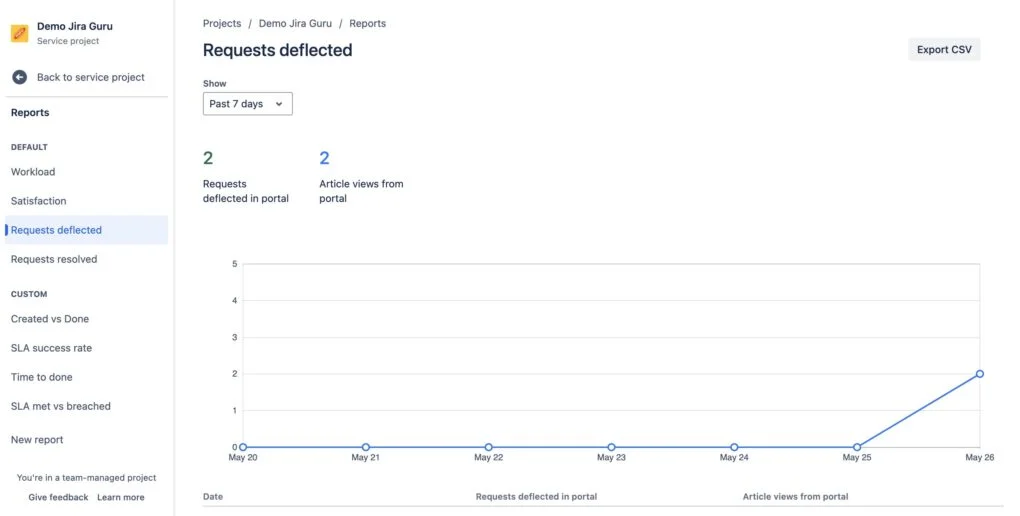
Requests Resolved:
- Breaks down how requests are resolved, showing numbers for requests resolved with articles and without articles.
- A request resolved with an article includes links to knowledge base articles in its comments.
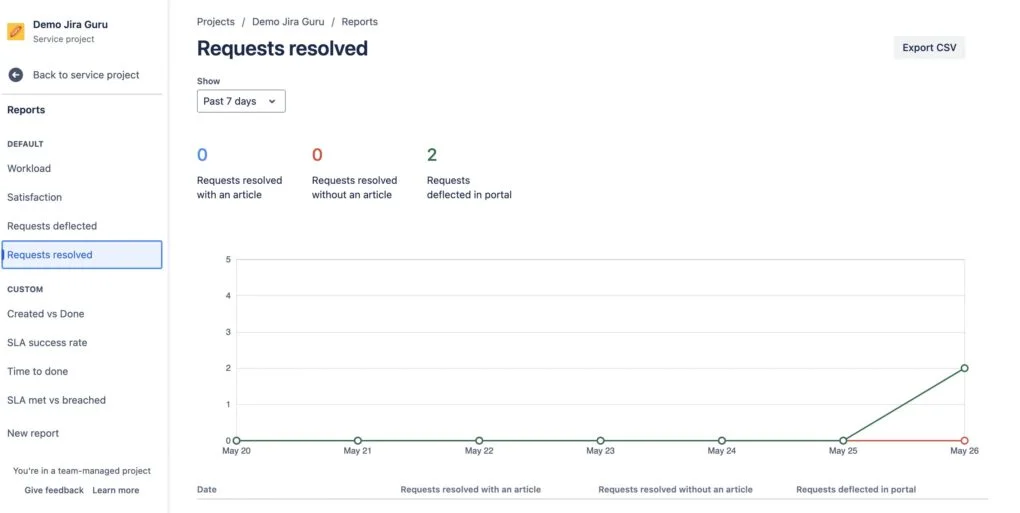
Accessing Reports:
Navigate to Reports:
- Go to your JSM project.
- Select Reports in the left-hand menu.
- Choose Requests deflected or Requests resolved to view the respective reports.
- Use the “show” filter to change the report date range.
Knowledge management best practices and tips
Effective knowledge management is essential for leveraging organizational knowledge to improve efficiency and customer satisfaction. Here are some best practices and tips to enhance your knowledge management process:
1. Expand with a Paid Confluence Plan
Expand Your Knowledge Base Capabilities with a Paid Confluence Plan. In addition to Jira Service Management’s built-in knowledge base powered by Confluence, subscribing to a paid Confluence plan offers even more capabilities:
- Templates: Access over 70 templates to standardize content for internal and external users.
- Comments and Mentions: Use in-line comments and @ mentions to facilitate collaboration and feedback.
- Attachments and Permissions: Allow article comments and attachments, and manage space and page permissions.
- Template Library: Explore a wide range of templates designed to address various use cases effectively.
2. Create a Culture Focused on Knowledge Sharing
Encourage a culture where knowledge is easily searched, found, and created:
- Team Participation: Motivate team members to actively create and edit pages.
- Recognition: Recognize and reward contributors to foster ongoing participation and improve customer satisfaction.
3. Focus on Brief Articles or Answers
Ensure that your knowledge base is effective by keeping content concise and easy to understand:
- Short and Simple: Write brief, to-the-point articles that are quick to consume.
- Clear Language: Use easy-to-understand language to make information accessible to all users.
- Timely Publishing: Ensure content is published promptly to keep information current and relevant.
Effective knowledge management boosts efficiency, customer satisfaction, and team empowerment. Using Jira Service Management’s knowledge base, combined with best practices like centralization, collaboration, and regular updates, ensures your information is valuable and accessible.
Upgrading to a paid Confluence plan enhances standardization and engagement with additional features. A well-maintained knowledge base supports your team and helps customers find answers quickly, making it a vital asset for organizational success.




